|
|
A picture post card of Loftus Congregational Church; the writer of the card was not very impressed with it! It is now known that this card and many others of Loftus were produced by T. C. Booth, the Congregational minister.
Image courtesy of Mrs Sakelaropoulos.
Yes I know we have this one but I thought it is rather a different view of the church; looking at it from the side rather than the front.
Image courtesy of Ray Silver.
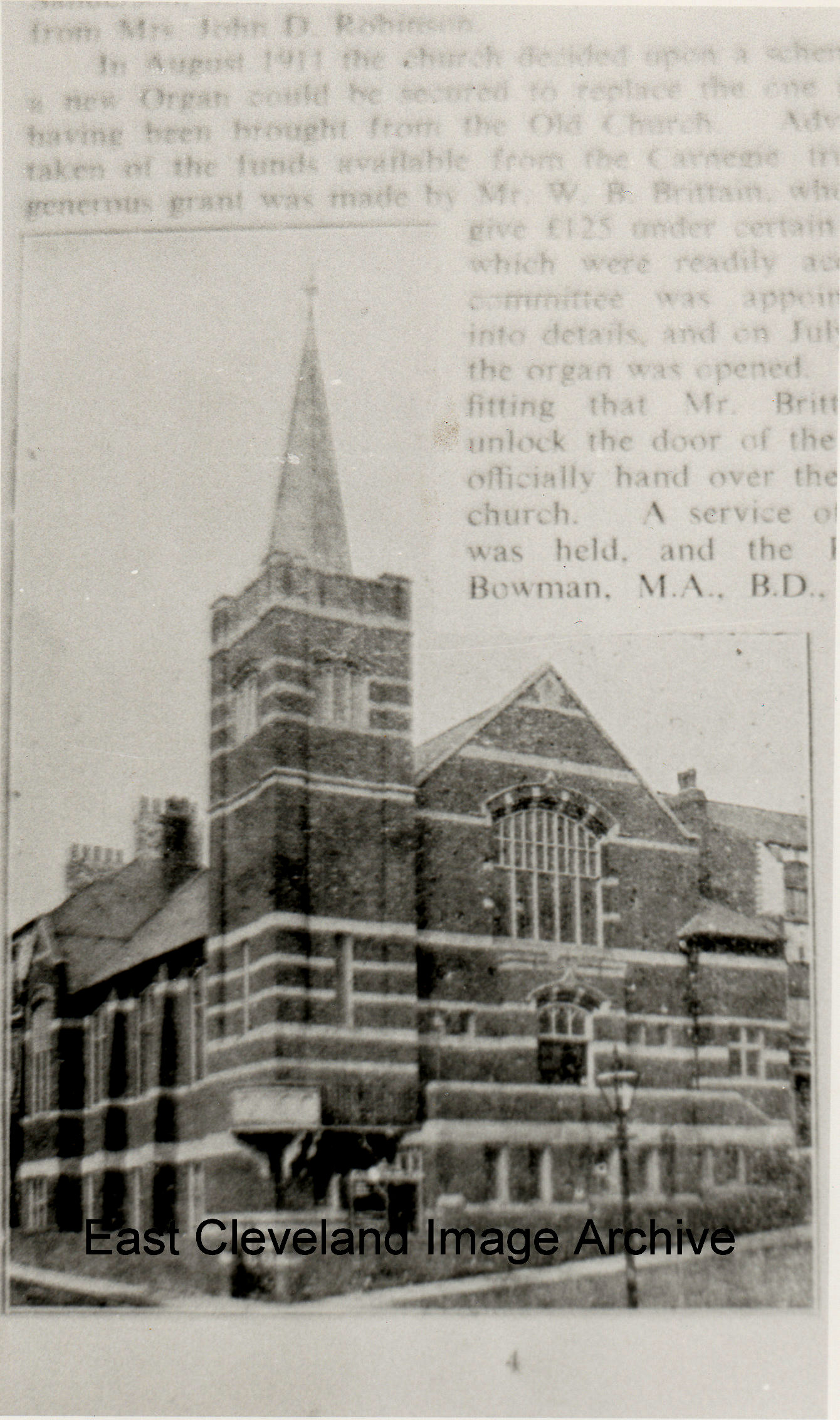
Not a very clear picture of this notable feature on the main thoroughfare of Loftus, on the original posting the writing could not be seen clearly; by adjusting the contrasts it is possible to read more of the test. It is obviously taken from an edited letter card or possibly a poster, the Archive continues to hope for a better image. This image does show the outdoor pulpit very well; as the former church fell into disrepair it was advised that the outside pulpit be preserved as there are very few left in the country; but sadly the vandals are taking no notice; today all that remains is the floor of the pulpit and a portion of the original metal balustrade.
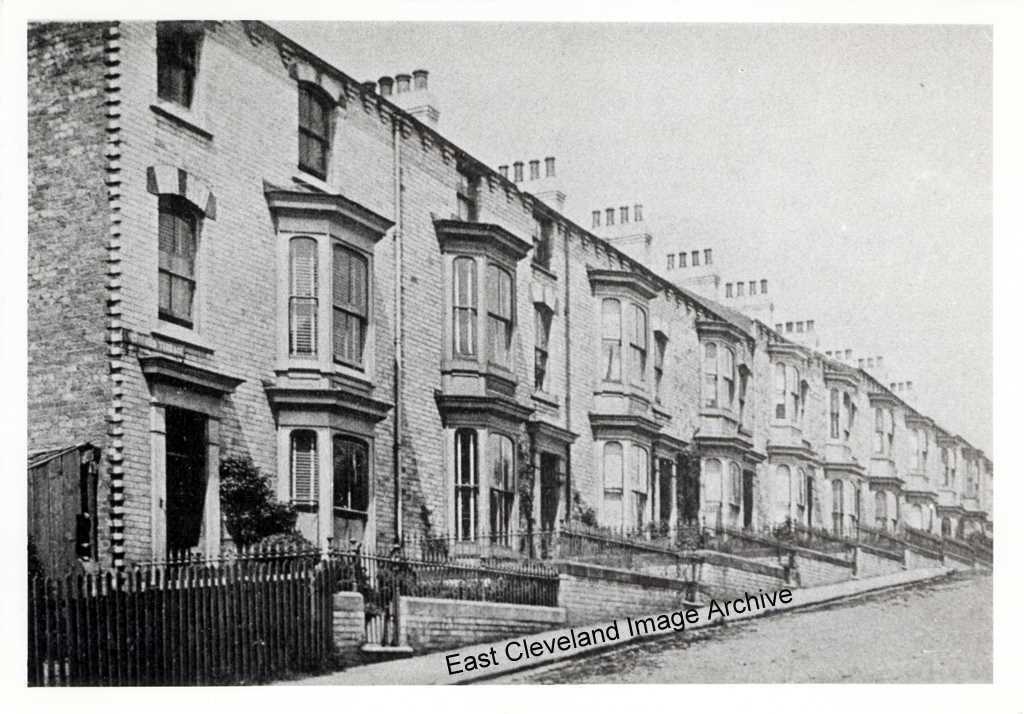
A row of rather up-market houses – considering that the average miner lived in a two-up-two-down with his entire family if he was lucky. As an example the 1911 Census lists residents various professions including, an auctioneer, a pawnbroker, Rev. Thomas Colledge Booth lived at number 5, a railway engine driver, retired farmers or widows of the same, the Registrar of Births and Deaths, Tyler Tyers the Primitive Methodist Minister lived at number 8 and living at number 12 was Alexander MacKenzie whose Drapery and Grocery store was at that time on the corner of the Market Place.Number 13 and the last on the row at that time was occupied by Thomas Henry Tarbit Loftus’s Surveyor and Sanitary Inspector; obviously the address to live at and even today the row presents as a well-built and pleasant row of houses.
Image courtesy of Marjorie Magor.
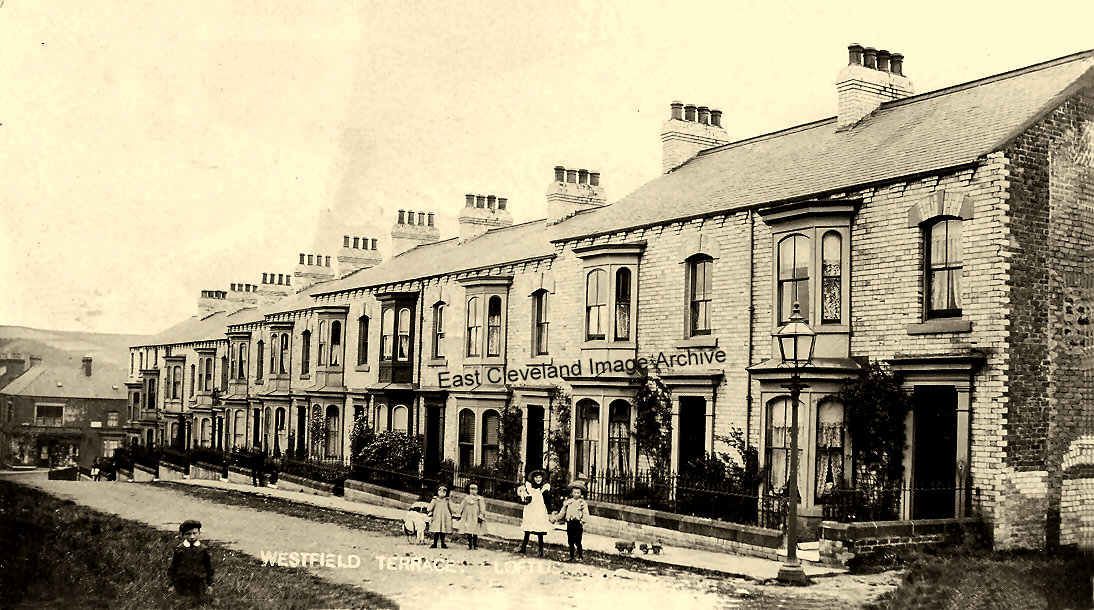
A good image of these upper class terraced houses (fancy facing bricks) with the usual inquisitive urchins posing for the photographer.
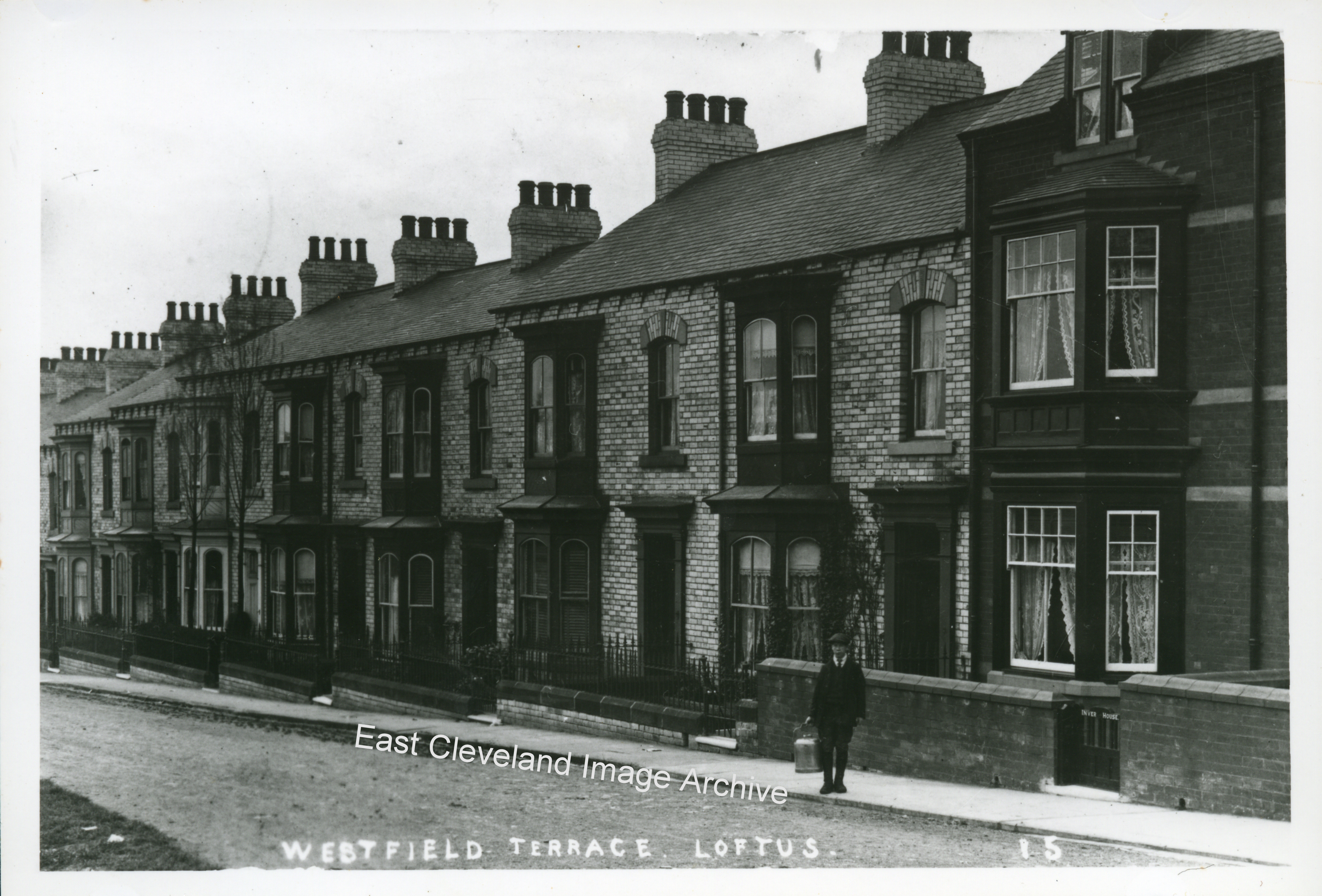
A young gentleman poses for the camera on Westfield Terrace, could it be before 1940 as the iron railings are still there? As the older ones amongst us know the iron railings were all taken during the war.
Image courtesy of Jean Dean.
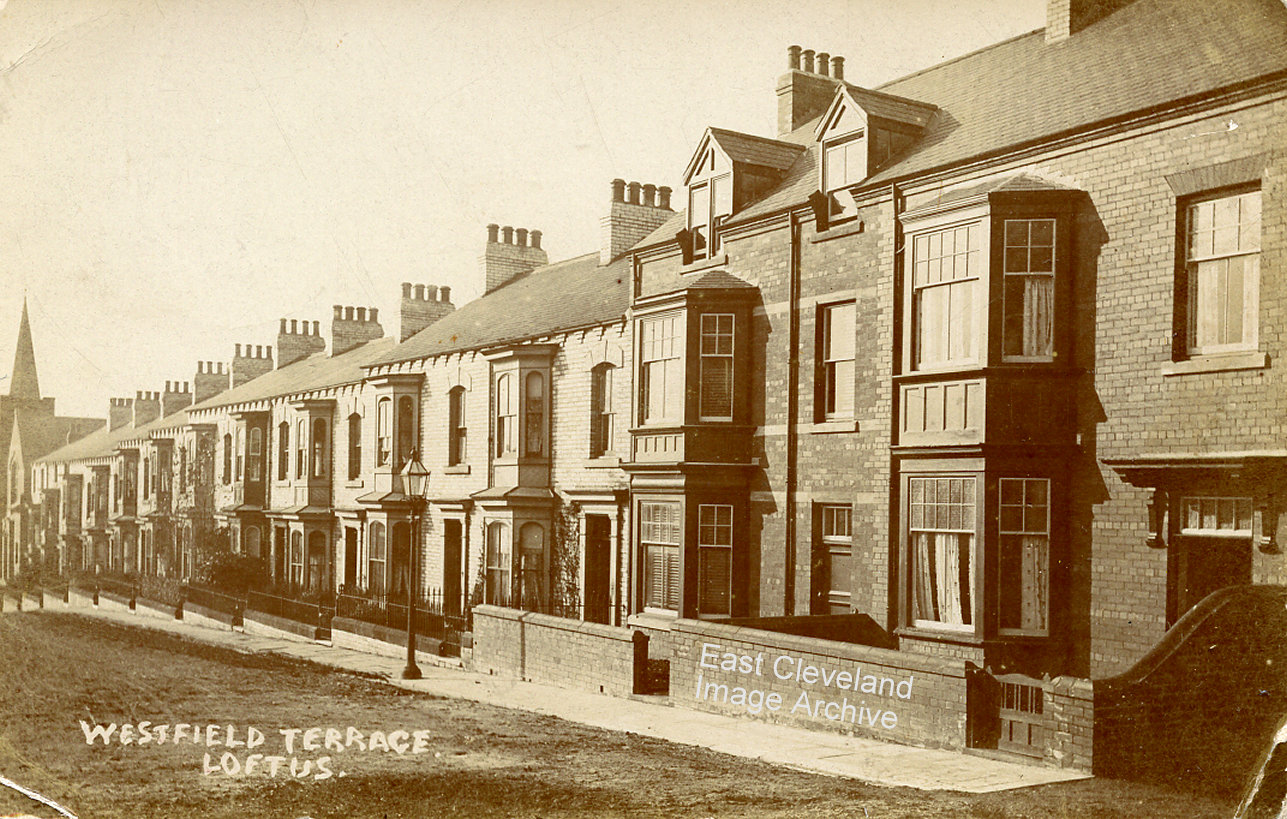
A view down the length of Westfield Terrace, from the junction with Coronation Road to the Congregational Church on the corner of West Road. The two large houses at the top were built later that the rest of the terrace.
Image courtesy of Mrs Sakelaropoulos.
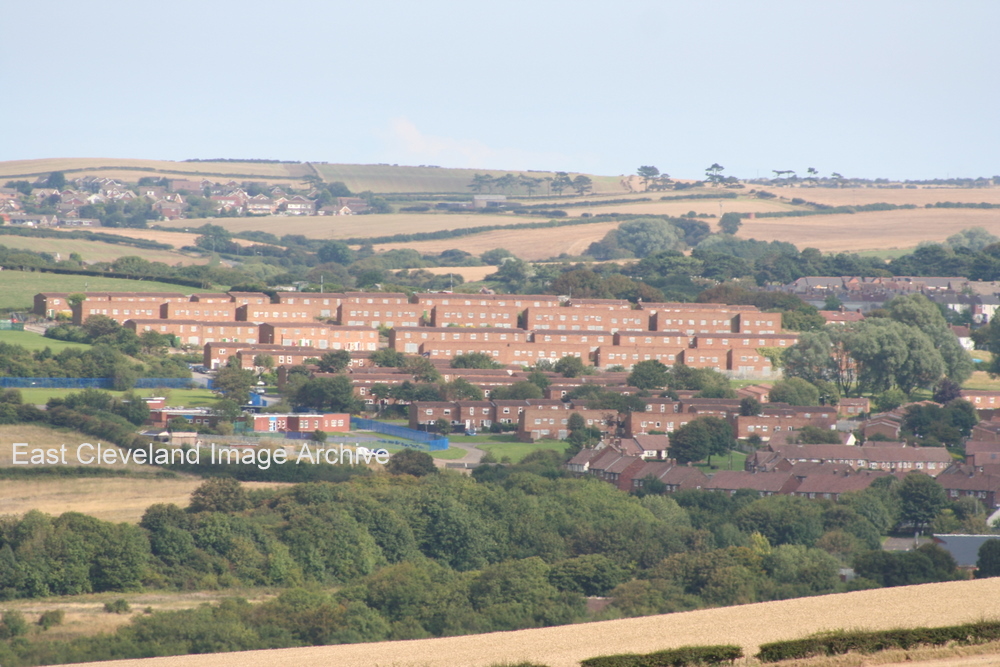
This photograph gives us a new perspective on Loftus; this view looks over the field behind the Leisure Centre and the houses of Rosedale Crescent to Hummersea Hills, formerly Westfield Estate; nick name “Colditz” being applied owing to its resemblance to the WWII prison with that name. Hummersea School can be seen to the front left of the estate. It took a while to get our heads round this view; the terraced streets of East Loftus can be seen behind the estate, on the right of the picture and Easington is in the background, on the left.
Image courtesy of Julie Riddiough; thanks to Maurice Dower and Margaret Atkinson for the updates.
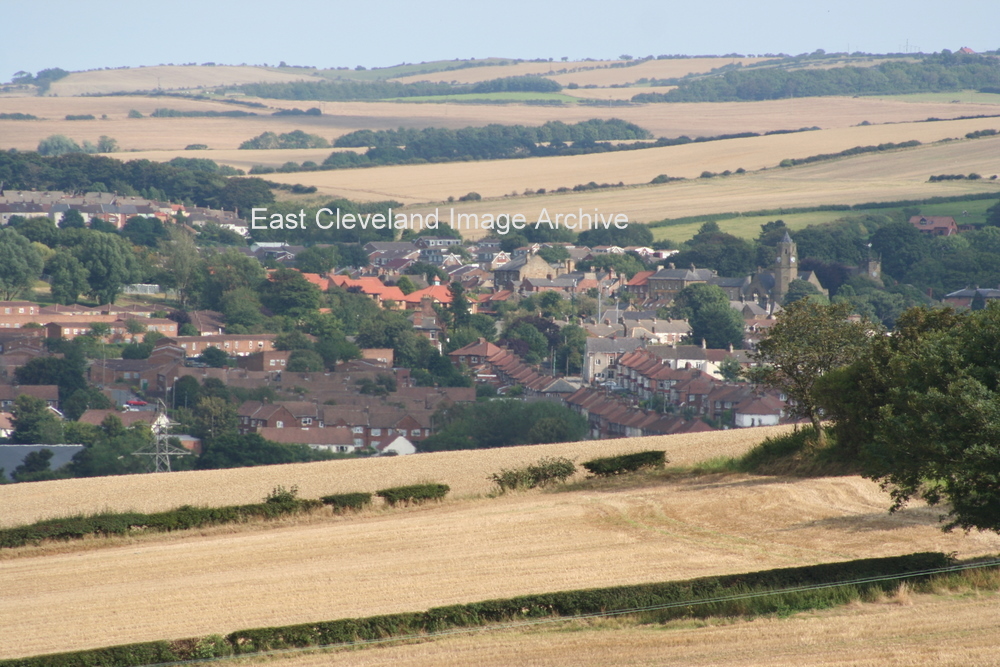
This photograph is a continuation of the previous one; looking down on the middle of Loftus from the top of Brotton. The roof of the Leisure Centre is on the left, beside the rooftops of the Mars estate. We can see along Coronation Road to the bright roofs of South View and the buildings in the Market Place. The towers of the Town Hall and St Leonard’s Church can be made out on the right. The Arlington estate can be seen beyond the Market Place and the terraced streets of East Loftus are on the left of the photo. The fields in the background go up to the skyline at Roxby.
Image courtesy of Julie Riddiough.
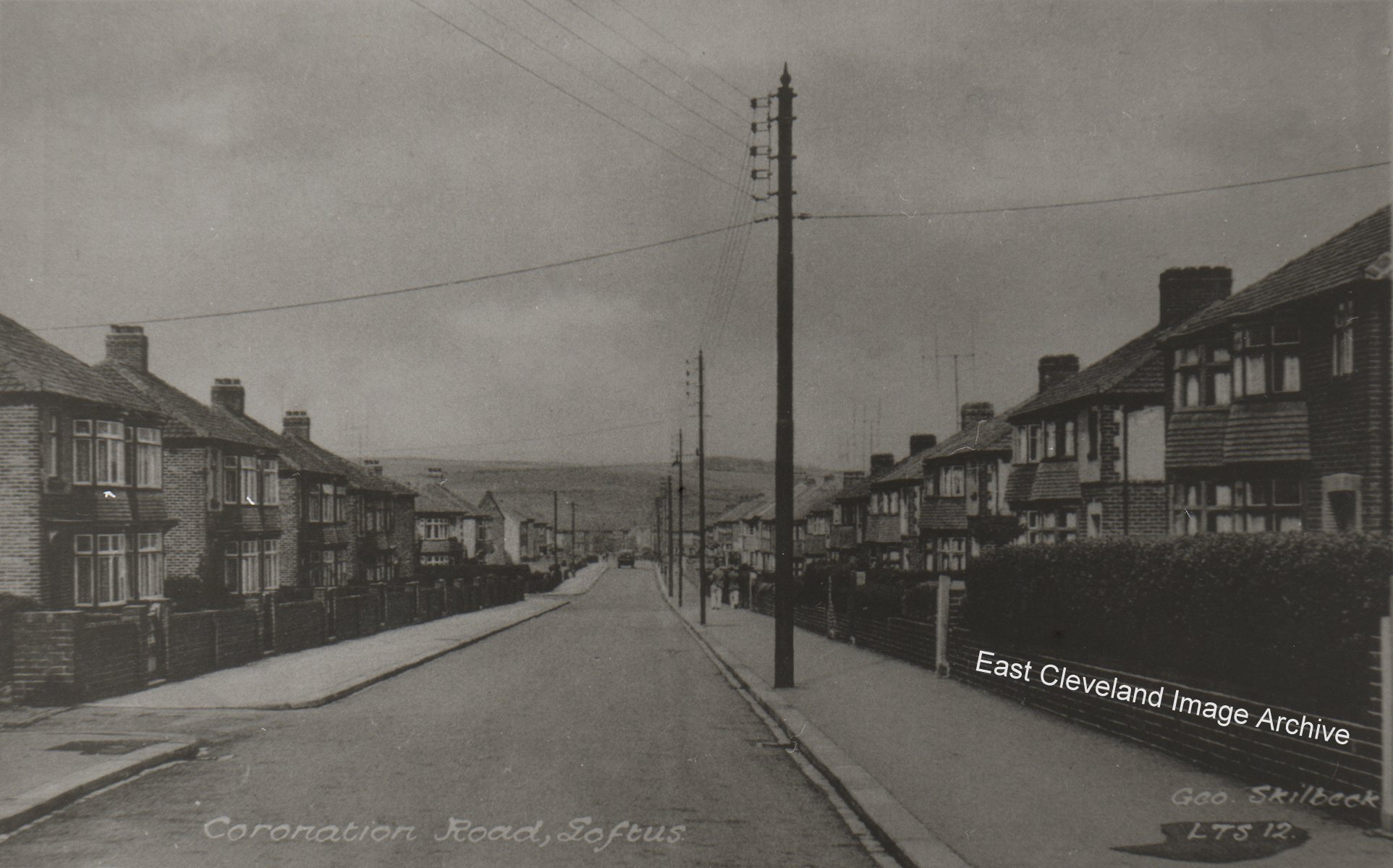
A George Skilbeck postcard view of Coronation Road taken from the east these are the private houses, we were unsure if it was a clear enough picture to see if the council houses were there when it was taken. Norman Patton tells us: ”The picture would be taken around the early 1950s. The VHF television aerials started to be common place about that time, events such as the Coronation and Stanley Matthew’s Cup winner’s medal with Blackpool shown from Wembley! the “council houses” were built quite a while before this, perhaps even late 30s.” Margaret Atkinson tells us: ”My gran and mam were first tenants to move they lived at no 11 that was 1939 their name was Meggie Trevor.” The 1939 Census (taken at the outbreak of the Second World War) tells us that Meggie and her son Arthur were resident at 11 Coronation Road.
Image courtesy of Ken Johnson and many thanks to Norman Patton and Margaret Atkinson for the updates.
|
|
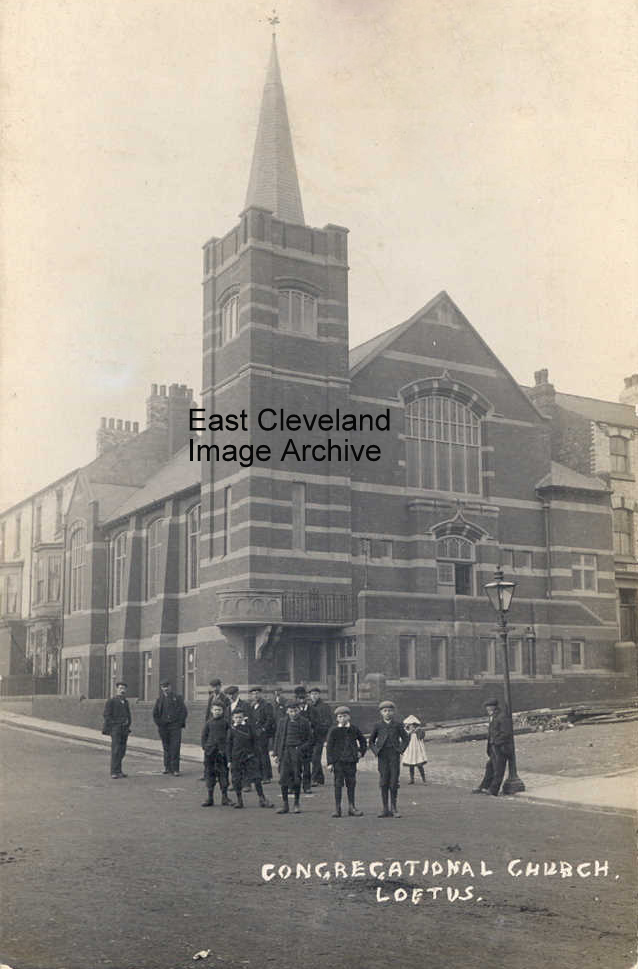
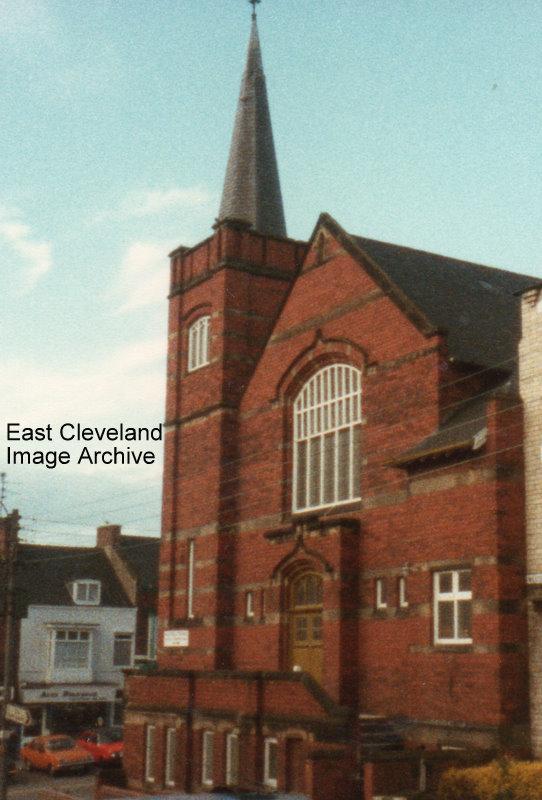








Recent Comments